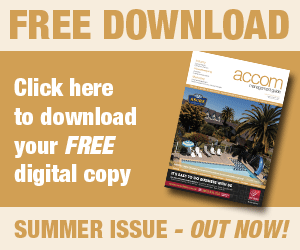Hotels vital to the new Christchurch city centre
- Details
- Published Date
The New Zealand Hotel Council recently had the opportunity to make a submission on the Draft City Plan for Christchurch.
The comprehensive and well- thought-through plan that the Christchurch City Council produced, under exceptional circumstances, was indeed impressive, but it included only limited recognition of the critical role that hotels will play in the revitalisation and future economic success of the CBD. A clear vision must be identified for the city so its unique history, both old and new, is preserved and developed to ensure a bright tourism future.
Currently, only 854 rooms across eight NZHC member hotels are operating in Christchurch. Prior to the February earthquake Christchurch hotels operated 3717 rooms across 27 hotels, employed over 2000 local staff and injected over $456 million per annum into the local economy through staff wages. They also paid over $2.8 million per annum in council rates. Eight months on from the earthquake all hotels within the CBD cordon remain closed. For NZHC member hotels this represents 16 properties. Some hotels are marked for demolition including Hotel Grand Chancellor, Copthorne Durham Street and the Crowne Plaza, the latter with the announcement that the owners are not intending to rebuild. By the end of 2012 NZHC estimates that about 2000 rooms will be available, or just over half pre-earthquake capacity.
The future of new hotel development in the Christchurch CBD is somewhat hazy. This is due in part to the general state of the economy, the reluctance by insurers to insure properties in Christchurch and the increased building code requirements post-earthquake. But of greater concern is the new height restrictions proposed in the Draft City Plan. These have raised serious concerns amongst NZHC members, who feel that the restrictions, if they are introduced, will have a profound economic impact on the viability of any future new hotel development.
The draft plan suggests a height limit for the CBD of just seven storeys, which decreases to five storeys a couple of streets out from Cathedral Square and then down to four storeys going out to the fringes of the four main Christchurch avenues. Prior to the earthquake a good four and a half to five star property had approximately 160 rooms. With 20 rooms per floor they stood about 10 storeys high, with two of those floors used for public areas – reception, restaurant, bar and conferencing etc. If the proposed building restrictions were implemented and hotels were restricted to between five and seven storeys then this would allow space for only 60 to 100 rooms. Based on current investment models this would not be viewed as an attractive investment option.
The proposed height limits, as well as new parking restrictions and issues around road front accessibility, have not taken into consideration the way hotels operate. Guests can't be expected to walk any length of distance with luggage or conference materials, and hotels must be able to provide on-site parking and have adequate set- back from the road to eliminate any traffic congestion with tour coaches and passengers disembarking.
Rebuilding the convention centre as quickly as possible within the CBD is high on the list of priorities. So is the creation of a "corridor of normality", which will serve as an attractive, rubble-free route to allow visitors back into the CBD and ensure there are activities and attractions, restaurants, bars and accommodation for them to enjoy once they reach their destination.
Central city hotels need the reassurance that when they reopen there will be visitors to welcome and look after.
Overlaying all of this is the absolute need for clear timelines to be set. Simple PR opportunities such as sod turnings for major infrastructure, like the convention centre, will keep the rebuild of the CBD front of mind and give confidence that progress is being made.
Prior to the February earthquake the convention and incentive market annually made up seven per cent or 22,412 of all hotel room sales in the city. This was on a par with Auckland and Wellington, with a significant portion of that business falling in the winter months. This sector not only sustained hotels during quiet periods making it an ideal shoulder season market, but also delivered conference delegates to the doors of restaurants, bars and retailers. For the new CBD to survive and prosper it is critical that visitors, both domestic and international, are attracted back to the heart of the city as soon as possible.
2011, regardless of everything else that has happened this year, was always going to have a Rugby World Cup focus and this magnificent event has been a wonderful distraction from a difficult year for many in the sector. For key RWC regions the event has delivered good visitor numbers into the hotels, but mainly around the key game days with some mid-week days being soft. As expected with any major event there has been business displacement, particularly in the meetings and corporate traveller markets and due in part to perceptions that everywhere was full and/or pricey. Slowly these rumours have been dispelled and people have realised that there are deals to be had. The now entrenched habit of booking at the last minute means that a late surge in hotel bookings may still eventuate.
Looking beyond RWC, hotels are reporting good corporate and conference bookings in November and early December. Five hundred American travel writers in Wellington in November, 200 Australian travel writers in Rotorua in October and an estimated 3000 Masters Games visitors in Nelson in October are all contributing to good levels of optimism for hotels leading into the 2012 high season.


